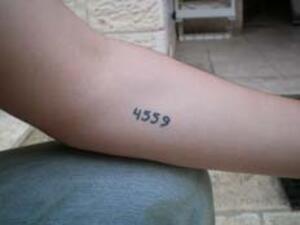Beloved Friends,
The year is 1990 and I am preparing for our Shabbat Worship at my first pulpit in Norfolk, VA. The phone rings in the office as I happen to be gathering a few papers for the service. I answer the phone and the woman on the line says, “Is it true that if you have tattoos, you cannot be buried in a Jewish cemetery?” Not the question I was expecting to field on an early Shabbat morning. I replied, “No, that is actually not true. Why do you ask?”
I learned from her that her dear friend had died suddenly. He, during the course of his life, collected a healthy set of tattoos that covered a majority of his body. He was a biker and a part of a Harley Davidson Motorcycle Club.
I ultimately met with his friends and officiated at his funeral. As an aside, it was a first for me and a very powerful introduction to this motorcycle culture that included a long procession of very loud Harleys. As I sat with his family and friends, I was not only able to hear more about this young man, but I was also able to talk further about the false teaching about tattoos and Jewish burial practices.
In the Torah portion for this week, R’eih, we find the command not to make any permanent gashes on our bodies. The command comes as a part of the mitzvot meant to keep our ancestors far from idolatry. Do not do as they do in their worship was the main message.
The rabbis as early as the time of Mishnah understood this and also understood that there could be other non-idolatrous reasons to mark your body. That is why they carefully defined what the Torah was prescribing.
Our sages of blessed memory understood that the essence of the prohibition was to protect our ancestors from idolatry. Ultimately, the transgression was defined as a tattoo that celebrated an idolatrous practice in deity or tattooing the name of God on your body.
Today, people use tattoos to mark a significant moment or event. Many survivors of a suicide attempt will use the tattoo of a semi-colon to express a commitment to living anew. Children and grandchildren of Holocaust survivors have tattooed the same number on themselves as the Nazis used to dehumanize their parent or grandparent. For them, it is an act of defiance as well as solidarity. Three of four of my own children have gotten tattoos to mark and celebrate events in their own lives.
While I do not advocate tattooing, I do embrace the notion of finding creative ways to mark significant events. Traditionally, Judaism has advocated Tzedakah as the best way to mark a celebration, commemorate illness and recovery, or to mark a passing. Turning outward to help others has been the Jewish response since the time of the Purim Story. In the Book of Esther, the Jews celebrated their escape from total annihilation by giving gifts to the poor as well as gifts to their friends.
At Jeremiah, we too have Tzedakah opportunities, from our High Holy Day Book of Greetings and Remembrances to our memorial plaques, and Wall of Life, in addition to other donation funds. As we approach the month of Elul and look ahead to the beginning of the New Year 5784, let’s be both creative and generous as we celebrate and as we mourn, finding new meaning together as a Jewish community of meaningful connection.
Shabbat Shalom,
![]()

